

Matt Campbell
2025 Porsche 911 Carrera T review
6 Days Ago
The newly facelifted Volkswagen T-Cross is still tiny, but comes with a higher price and a more mature demeanour.
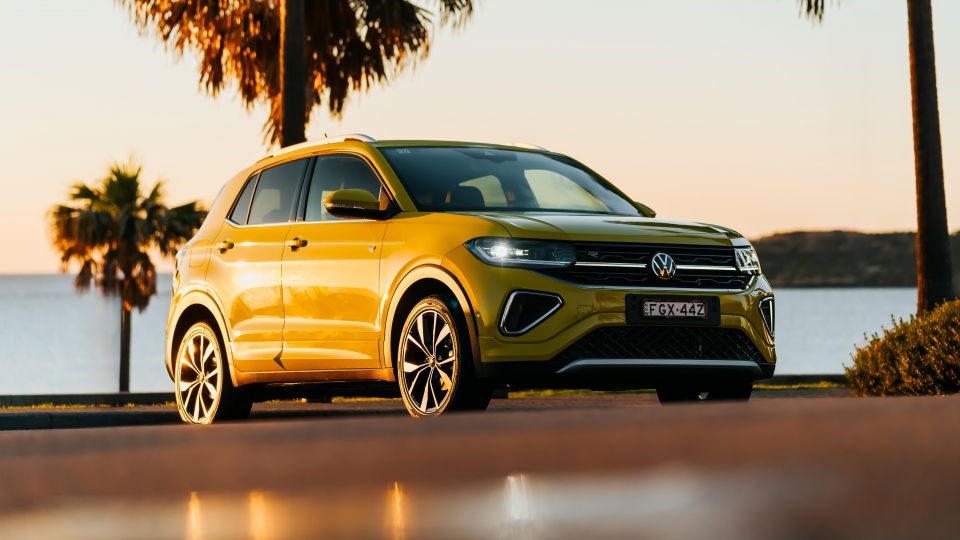
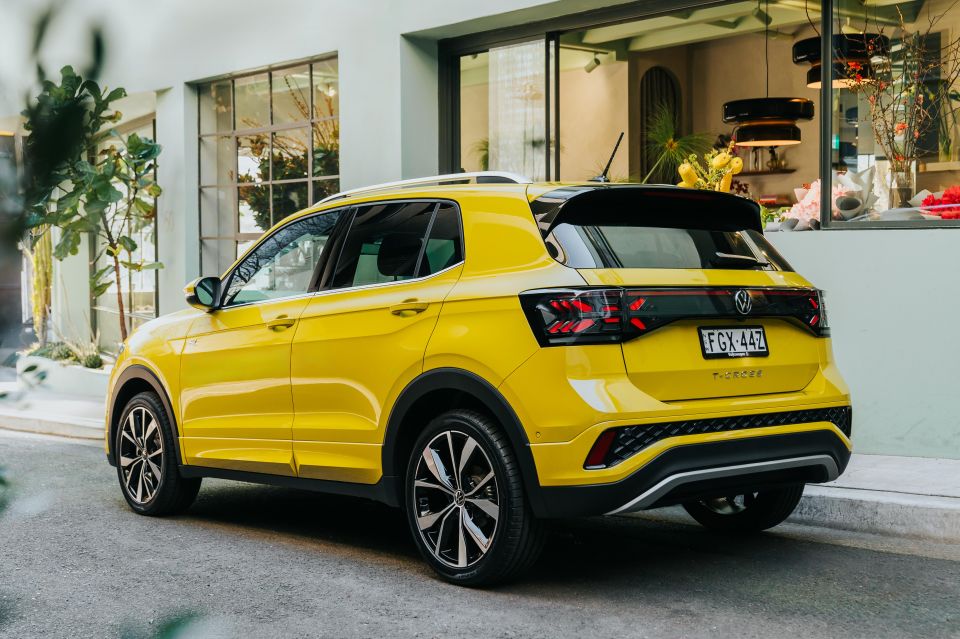

Quickly see how this car stacks up against its competition. Select any benchmark to see more details.
Where expert car reviews meet expert car buying – CarExpert gives you trusted advice, personalised service and real savings on your next new car.
The Volkswagen T-Cross is the brand’s smallest SUV, but it has always felt more mature than some of the rivals in the light SUV class.

Having served as the basis of the VW SUV range for four years now, the T-Cross has long been seen as a sophisticated and practical model for those on a tighter budget.
But with this recent update, the pricing has crept up to new levels, leaving the T-Cross in a quizzical position when it comes to the ‘metal for your money’ mindset.
Luckily for VW, though, size isn’t everything. This is still one of the cleverest compact crossover models on the market, and in this review you’ll find out what’s changed, what’s good about it, and what could be better.
There are three variants in the updated T-Cross range, with the R-Line now a standalone model rather than an option package on the Style.

| Model | Price before on-road costs | Nationwide drive-away price |
|---|---|---|
| 2025 Volkswagen T-Cross Life | $33,990 (+$3000) | $34,990 |
| 2025 Volkswagen T-Cross Style | $37,490 (+$4000) | $39,990 |
| 2025 Volkswagen T-Cross R-Line | $40,990 (NEW) | $43,990 |
To see how the T-Cross compares to its rivals, check out our comparison tool.
There have been some changes to the interior design and finishes to the T-Cross’s cabin, but it’s still one of the best and most ergonomically pleasing small SUVs on the market.

There have been some new trim finishes applied inside, and the Style grade is the one that stands out most, with its denim trimmed seats and light, soft finishes on the dash.
It’s reminiscent of the Hyundai Venue’s interior in some ways, and there’s also the expected leather-lined steering wheel, and plush touches like auto-up/down windows for all.
What isn’t as impressive for the base grade is the turn-key ignition, which – if you’ve had keyless entry and push-button start – mightn’t be palatable. Parents will know it can be a godsend.
Now, VW Australia has called this a ‘great first new car’, or perhaps more soberingly, a ‘terrific last new car’. With that in mind, here’s a bit more info on the ergonomics.
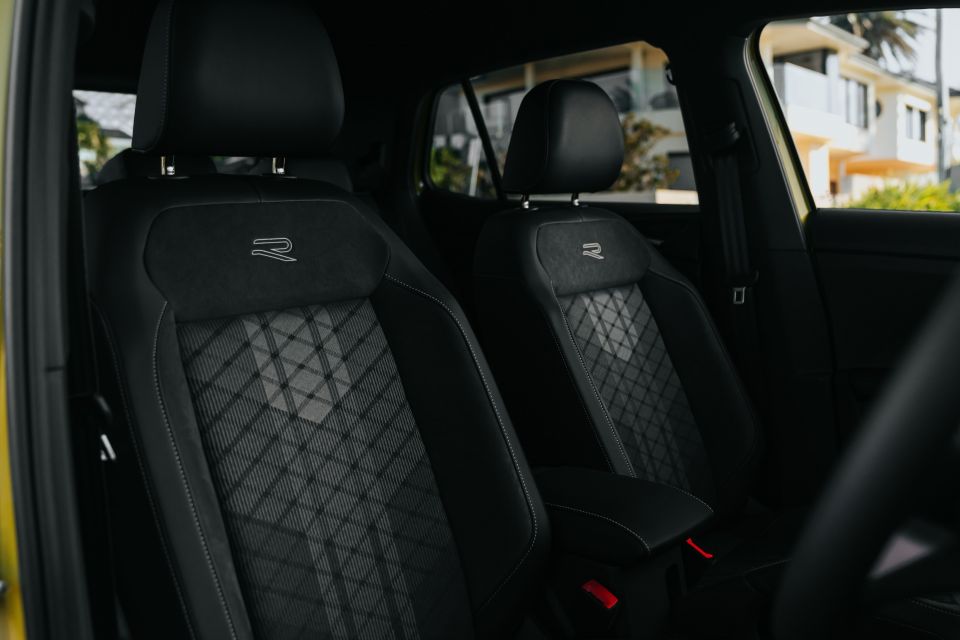
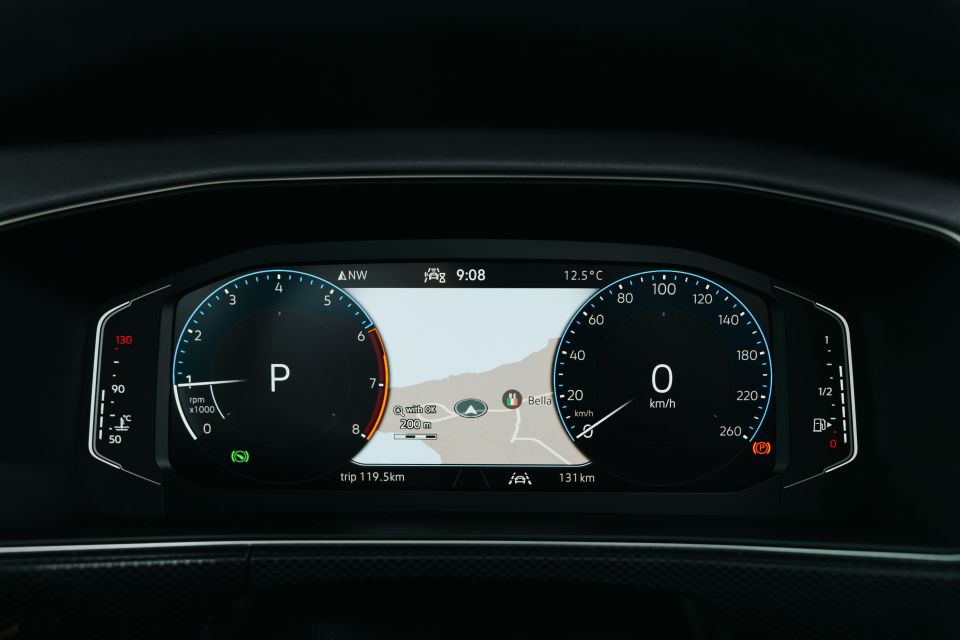
There is ample adjustment to the seats, and there’s rake and reach adjustment for the steering wheel, too.
But one thing that some buyers may find to be a problem is the length of the seat base. My mum is a shorty at 4’11 and she can’t get comfy. The steering wheel is on the plump side, too.
But for most buyers it’ll be sweet, and thankfully the controls in the cabin all fall easily to hand for the most part. The new ambient lighting strip across the dash adds some wow factor at night as well.
The 8.0-inch touchscreen media system that’s standard on all grades might be smaller than others, but it’s simpler and smarter in most instances.
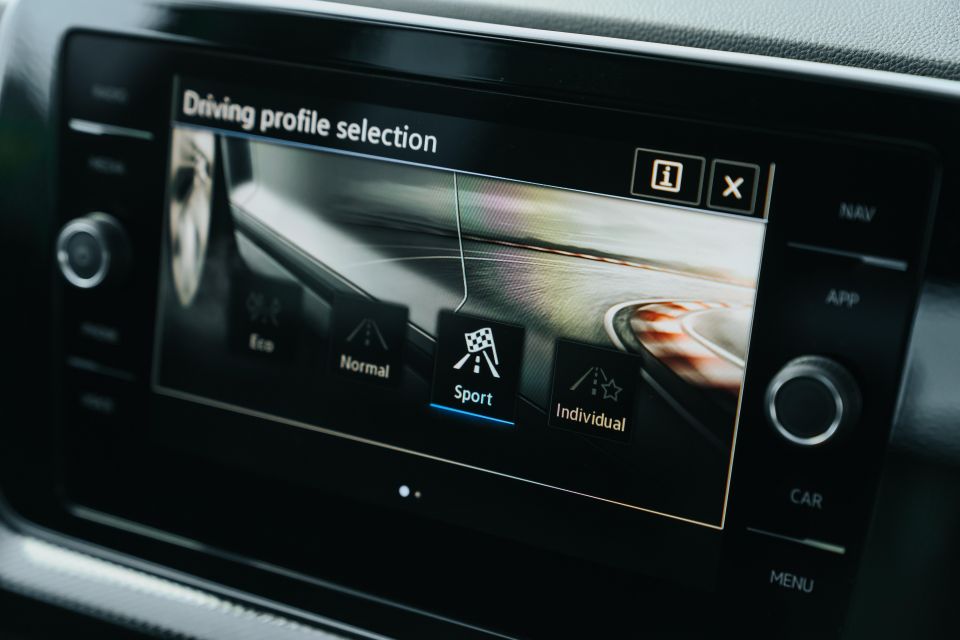
There are tuning and volume knobs, which is a win, and the Style and R-Line models come with wireless Apple CarPlay and Android Auto, as well as built-in navigation. The Life has wired smartphone mirroring, and no nav.
The controls for the screen are seemingly easy enough to learn, and there’s a secondary panel below for dual-zone climate control in the Style and R-Line models – the Life grade gets knobs for its manual air-con. That touch panel in higher models is prone to fingerprints, and it can be easy to bump the wrong thing if you’re driving.
Speaking of, there are proper buttons on the steering wheel rather than haptic controls, and the stalks and switches are all simple to get to grips with.
Storage up front includes a small covered centre console bin, small cup holders between the seats, a storage tray in front of the shifter which in all grades incorporates a wireless phone charger. There are also enormous door pockets, but they’re not lined – so things can rattle around.
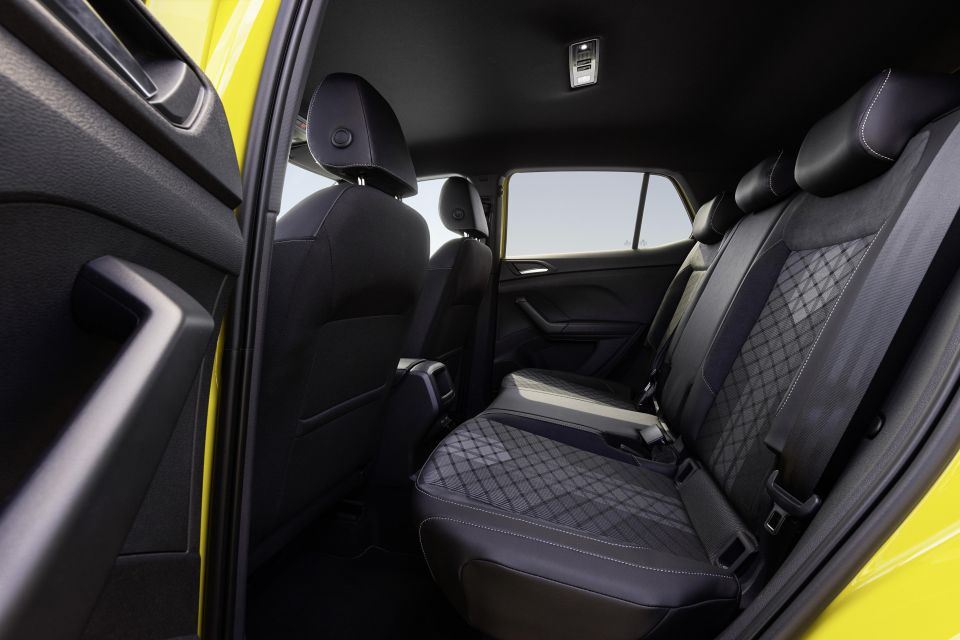
The biggest downside about the interior is the lack of directional air vents in the second row, meaning those in the back may not get as much air as they wish for. The hard plastic armrests on the doors aren’t great, either.
But the second row also plays host to the T-Cross’s big party trick – a sliding seat base that allows you to significantly improve the amount of boot space if you don’t need rear-seat legroom, or if passenger space is the priority you can shrink the boot.
Now, for rear seat space, I set the driver’s seat to my 182cm/6’0 position and found I had a good gap in front of my knees, and a decent amount of foot room. Headroom is also great for a car of this size thanks to its boxy design.
Three adults across the back is possible but won’t be superb for the middle rider, as there’s a big transmission tunnel intrusion.
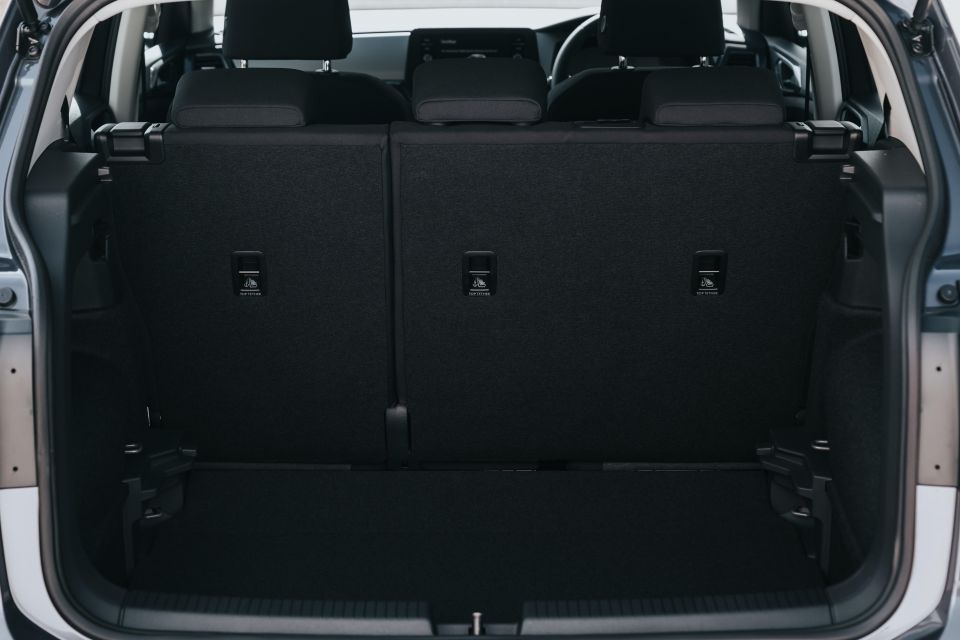
With that clever seat slid forward, I could straddle the seat ahead with my knees squished. So, it might be fine if you have a child in the back, but not perfect for hauling big units and a load of stuff in the boot.
There are ISOFIX points on the window seats and three top tether points, too, and while there are big door pockets and map pockets on the seat backs, there is no drop-down armrest with cupholders.
The official cargo capacity specs are the same as before – 385 litres when the back seat is in the traditional position, which expands to 455 litres with the seat slid forward.
Those numbers are for the adjustable boot floor being set in the lowest position, and you will need to be mindful that if you have the false floor lowered, there’s a big step up to the seatbacks.
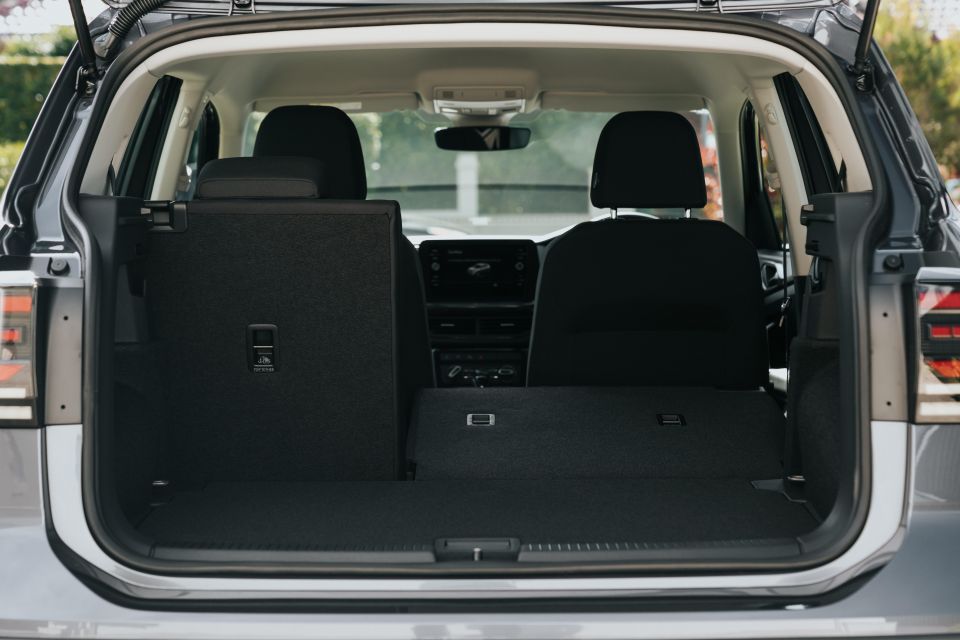
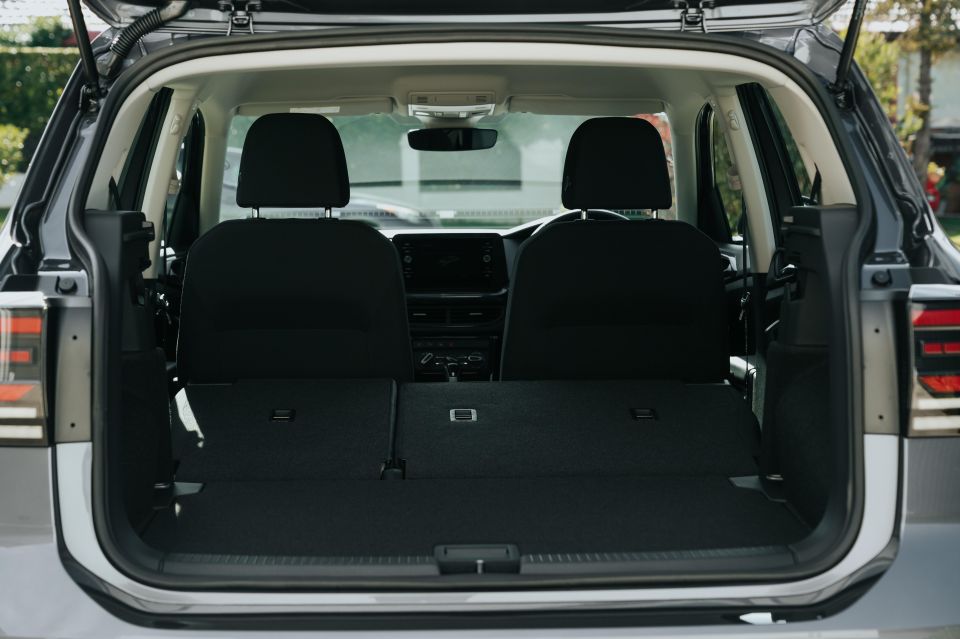
But if you have the false floor in play, and the seats slid all the way back, you’ve got a massive storage space of 1255L. There are gap-flaps to keep things from falling down in the crevice, too.
The cargo area also features a couple of shopping bag hooks and some cargo tie-downs. Plus, there’s a space-saver spare wheel under the floor of the boot – very handy.
The T-Cross range is solely offered with a 1.0-litre three-cylinder turbo-petrol engine in Australia, referred to as 85TSI by Volkswagen – as you may have deduced, it offers 85kW of power and 200Nm of torque.
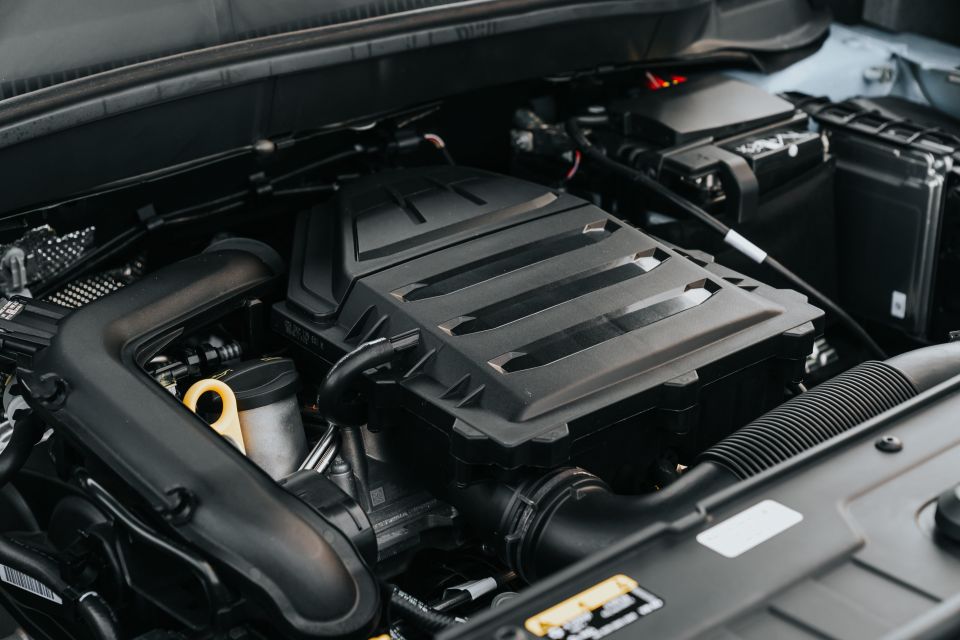
Power output is lower than some rivals, but the torque is among the best in class. It comes as standard with a seven-speed dual-clutch auto (DSG), and the T-Cross is front-wheel drive only.
The T-Cross quotes an impressive official fuel use figure of just 5.4 litres per 100km, with a 40-litre fuel tank capacity and the strict requirement for 95 RON premium unleaded petrol. To help it save fuel it has idle start-stop technology too, and there’s a button to turn it off just near the gear selector.
Now, the testing I did mightn’t be representative of what you do on a daily basis, but I saw a displayed return – averaged across three different cars, driven by three different drivers – of 7.2 litres per 100km. But hey, we did Mount Glorious and Mount Nebo, which mightn’t be how you drive your T-Cross.
In fact, in the previous model I did a lot of highway commuting and was regularly seeing in the fours for that kind of driving.
If you’re thinking you might not be able to tow with such a tiny jigger, you’re wrong/ It has an unbraked towing capacity of 630kg, and braked towing is rated to 1100kg.
There haven’t been changes to the drive experience, and that’s absolutely fine.
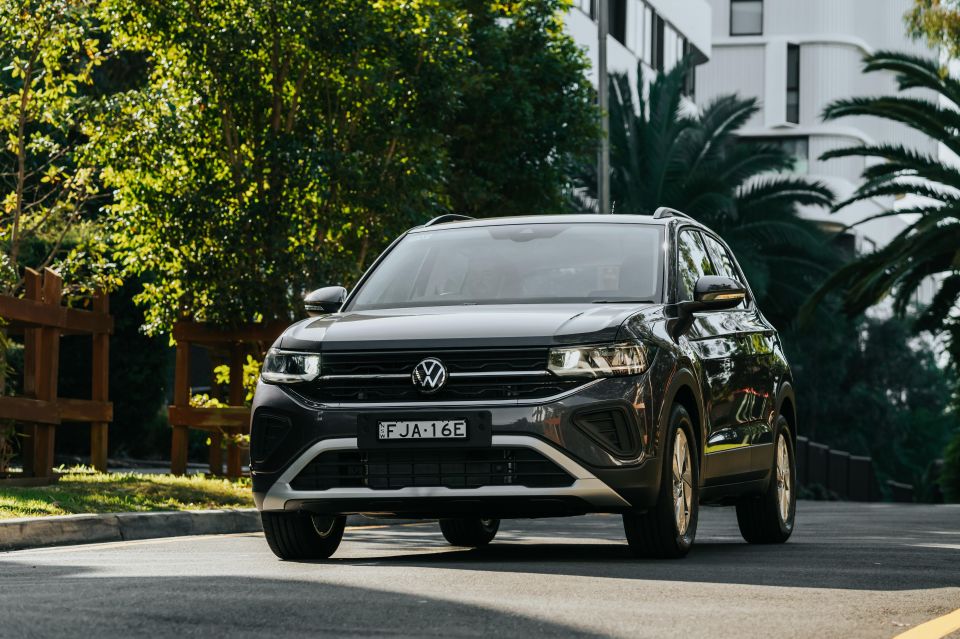
I say that because the T-Cross was already one of the best little crossovers to drive, and that remains the case with this updated version.
The three-pot turbo petrol engine is a corker. It has heaps of torque, meaning it feels super thrusty when you want it to, and it’s backed up by the clever seven-speed DSG auto which is snappy with its shifts under hard throttle and smooth when you’re just tootling along.
It isn’t afraid to use the high gears at low speeds, either, and allow the engine’s torque to do the work if that’s the most efficient path forward.
But for the enthusiast, there are also paddle-shifters and a manual shift mode for the stick, too, which is a bit of fun in the right situation. There’s also a Sport mode if you just want it to hold revs longer and shift more assertively.
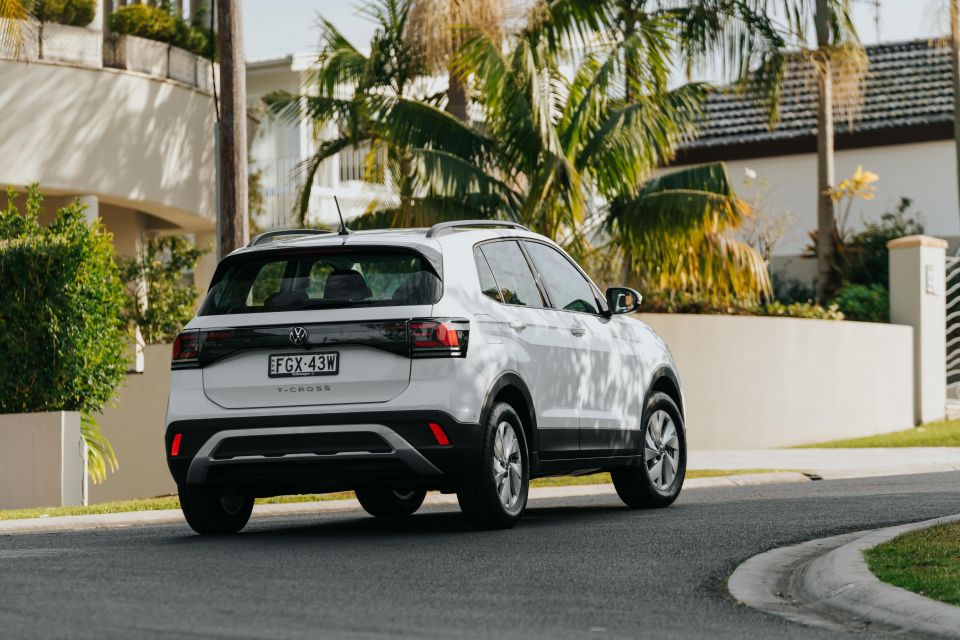
I will just say that, like the last model, in stop-start situations you might find there is some lag when you’re getting moving.
The combination of the small turbo engine, DSG and start-stop system can mean it has a bit of that ‘lag and lurch’ sensation – anyone who is familiar with sort of powertrain will know that you can largely drive around it, but for the uninitiated, it might seem a bit strange.
Now, it’s far from a performance SUV, and I wouldn’t say it’s sporty to drive. But it is a heap of fun.
So much of that comes down to the chassis tune, which is brilliant – it has quite a long wheelbase for the size of the car, and that means it has a great stance and road feel with a squared-off drive experience that makes it feel like there’s a wheel at each corner.
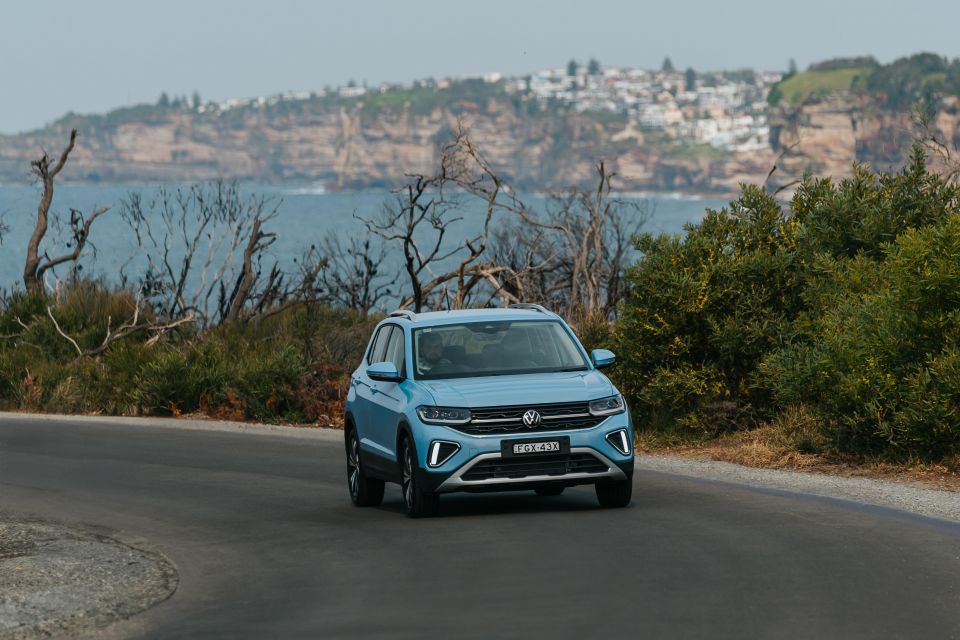
Around town it means a pretty well-sorted ride, though you can feel sharp jolts occasionally if the surface isn’t perfect. But when it is perfect, or at least close to good, it’s a terrific ride.
I drove both the Style – which wears 17-inch wheels with in 205/55 R17 Hankook Ventus Prime3 rubber – and the Life grade which has, ahem, chubby 205/60 R16 Giti GitiSynergy E1 tyres. Those Giti tyres aren’t as grippy as the Hankooks, but they do offer a bit more sidewall cushioning over smaller inconsistencies.
The steering has a terrific balance of weighting and directness that makes it more engaging than most rivals. It’s a hoot to push this little jigger through corners faster than you might think is possible, and like they say it’s more fun to drive a slow car fast than a fast car slow.
If you’re more concerned about how it is to park, you’ll be happy to know that it’s one of the easiest little cars on the road in that regard – with front and rear parking sensors and a reversing camera, plus good visibility from the driver’s seat, it’s pretty simple to pilot into a spot.
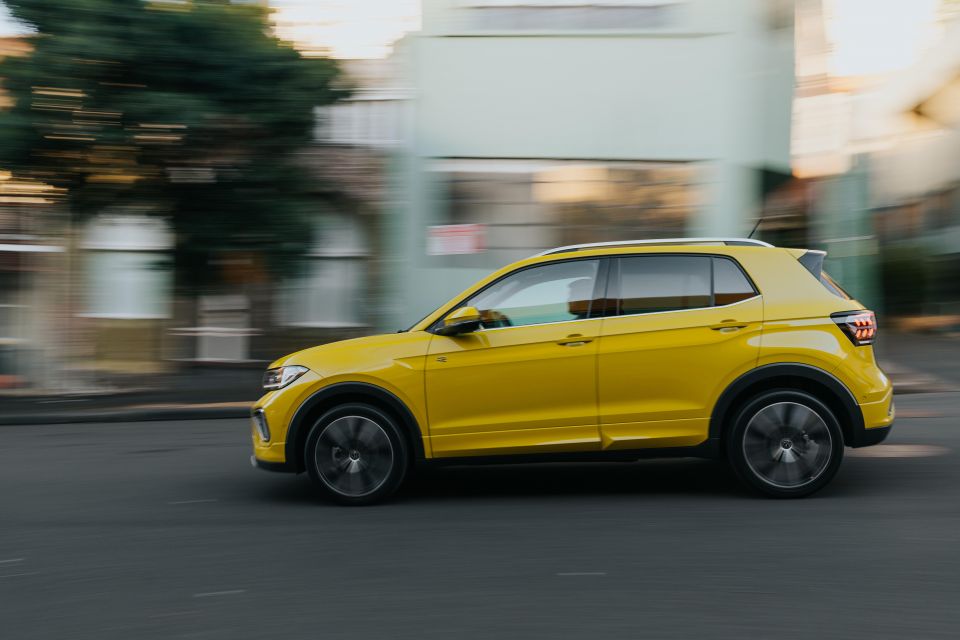
Where expert car reviews meet expert car buying – CarExpert gives you trusted advice, personalised service and real savings on your next new car.
But if you’re not confident, there’s a standard semi-autonomous parking system. That might even be more useful than a surround-view camera for some buyers, but I still think a more advanced camera system would be welcome here.
It has terrific braking response, with a really positive feel through the pedal. But also, in some situations in the car I was driving, I could hear noise from the brakes in stop-start traffic, which may just come down to the brakes of the near-new T-Cross I was driving having not bedded in completely.
There’s a bit of road noise intrusion to contend with too, particularly on coarse-chip roads at higher speeds.
Really my only big criticism of the drive experience is that – while the three-cylinder is a corker – it’s not as smooth refined, powerful or effortless as the 110kW 1.5 TSI offered in the sister product from Skoda, the Kamiq Sportline.
The standard equipment stakes have been bettered by the facelifted version of the T-Cross, which has a number of additional features – and a few important new safety items, detailed in the next section.
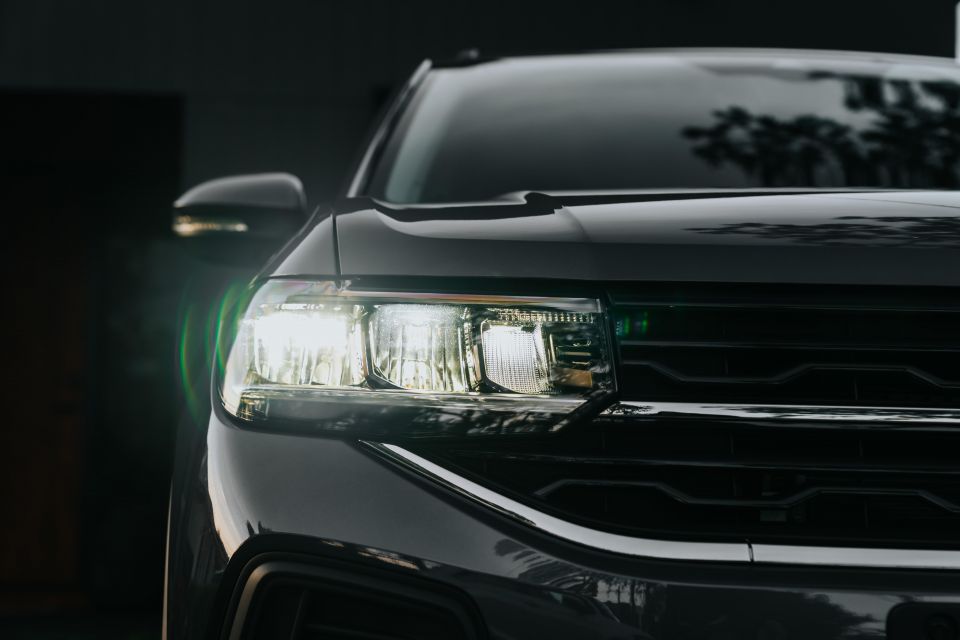
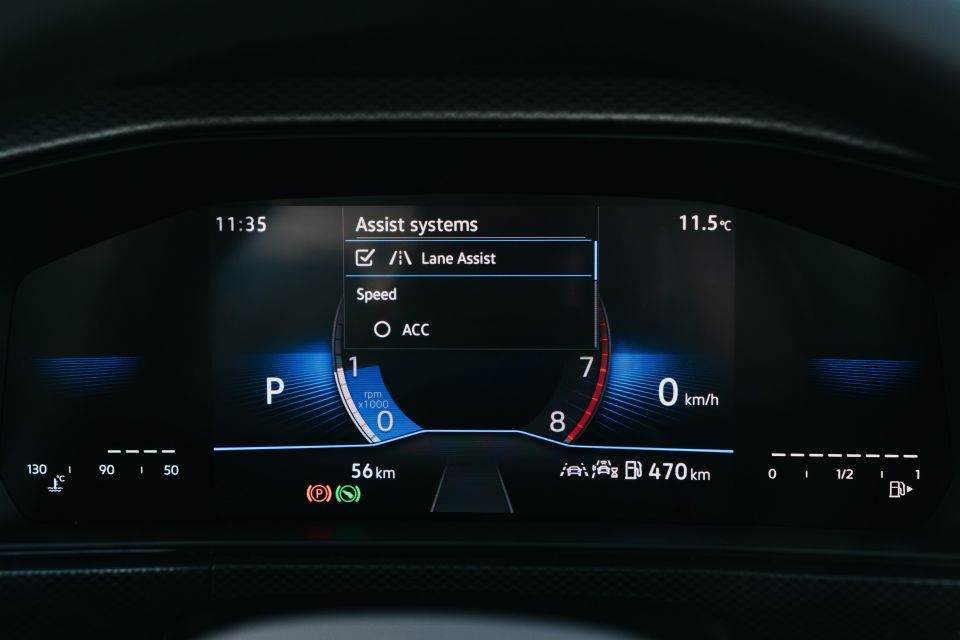
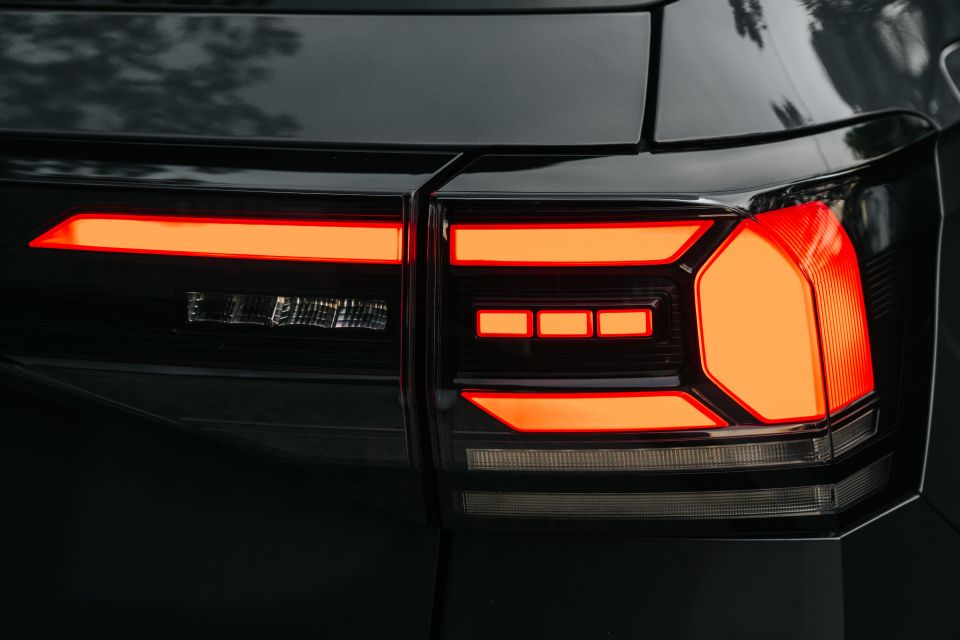

T-Cross 85TSI Life highlights:
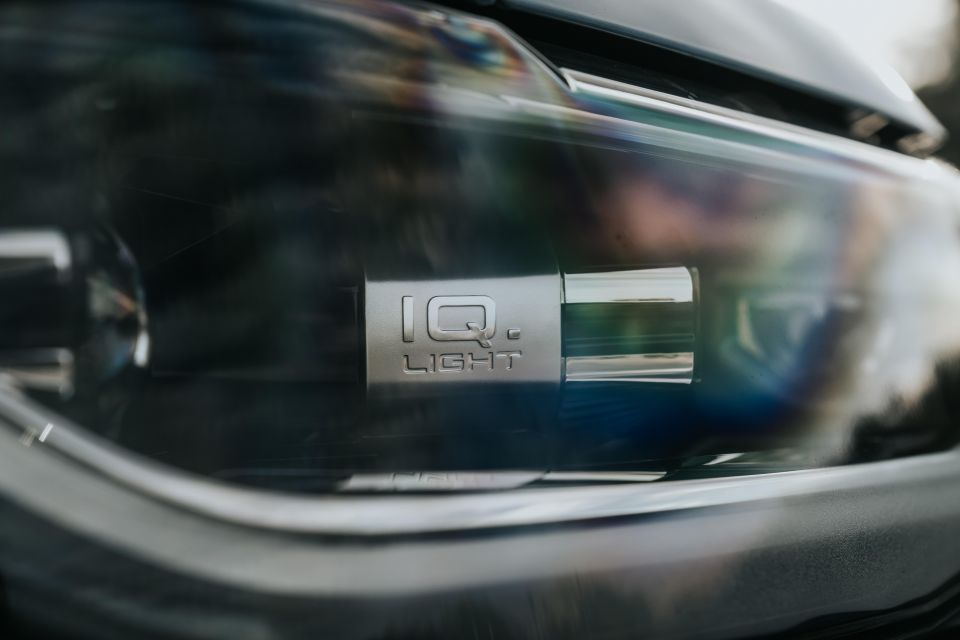

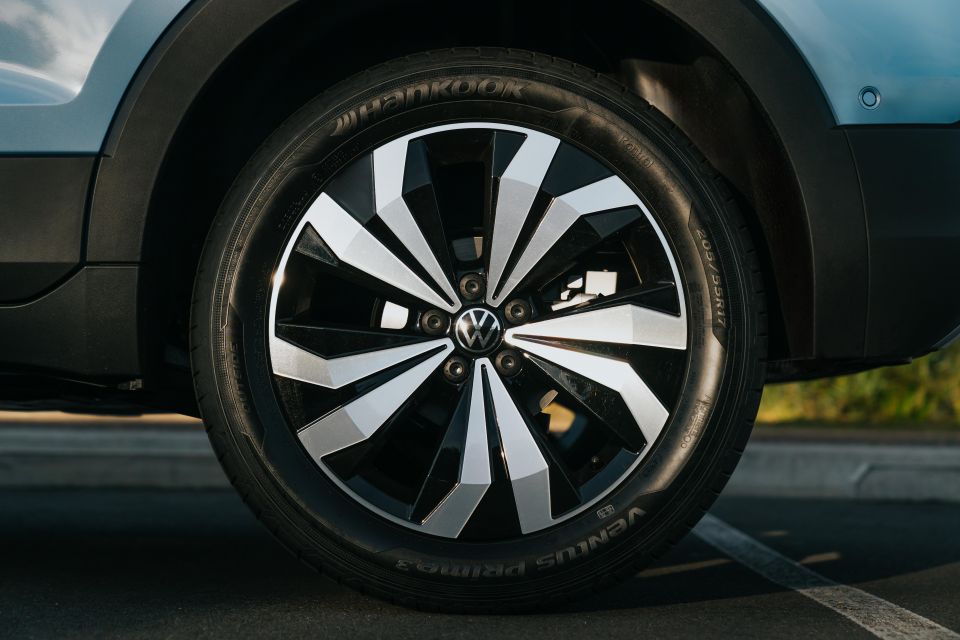
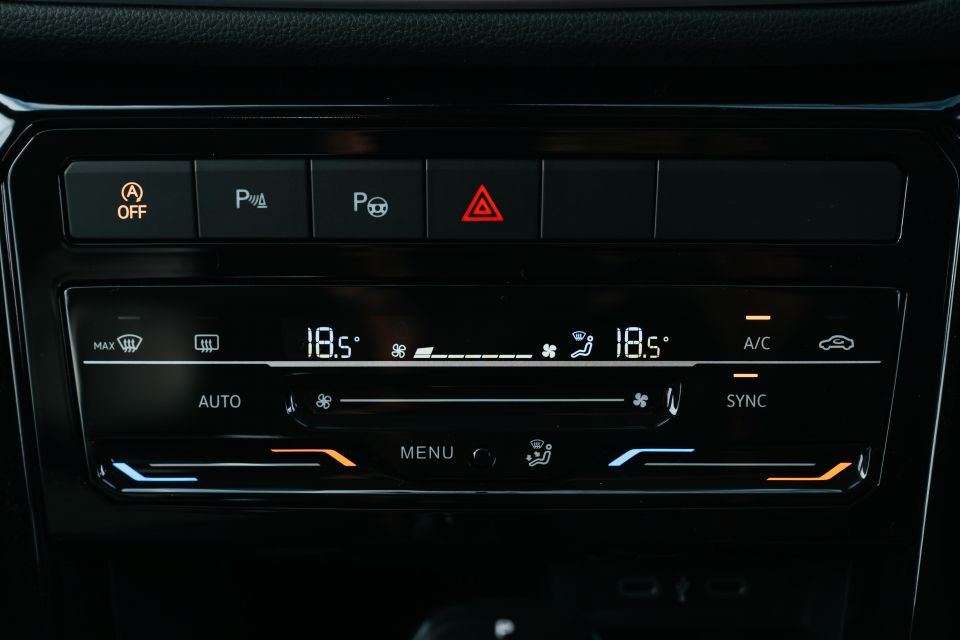
T-Cross 85TSI Style adds:
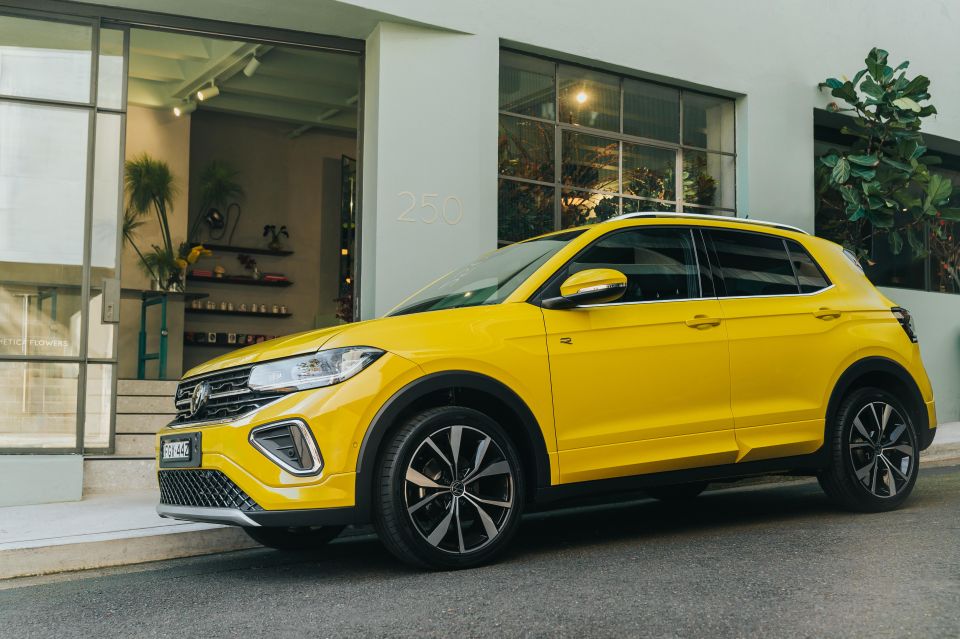
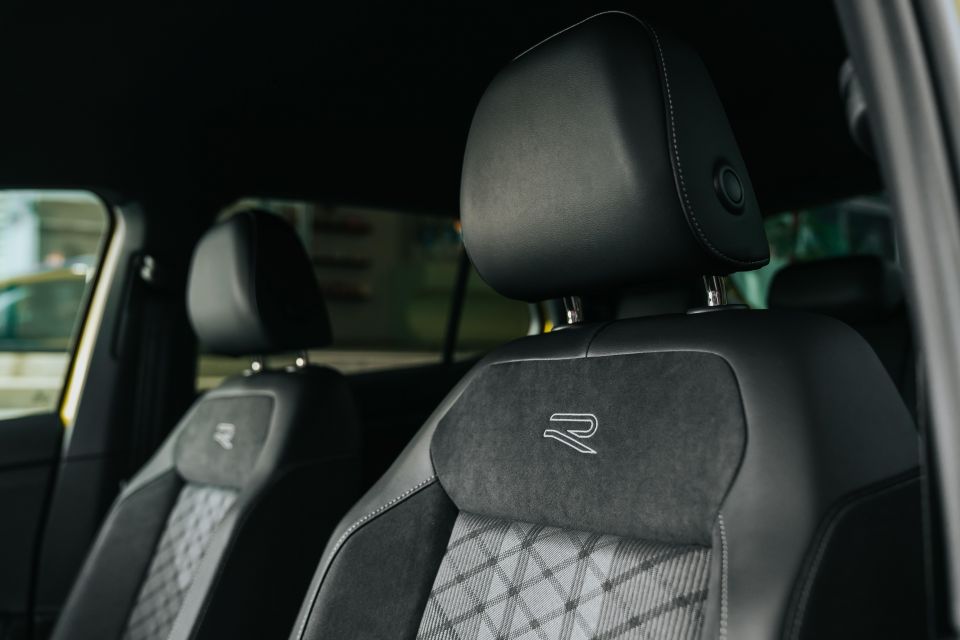


T-Cross 85TSI R-Line adds:
A five-star ANCAP safety rating was awarded to the T-Cross in 2020, based on tests conducted in 2019.
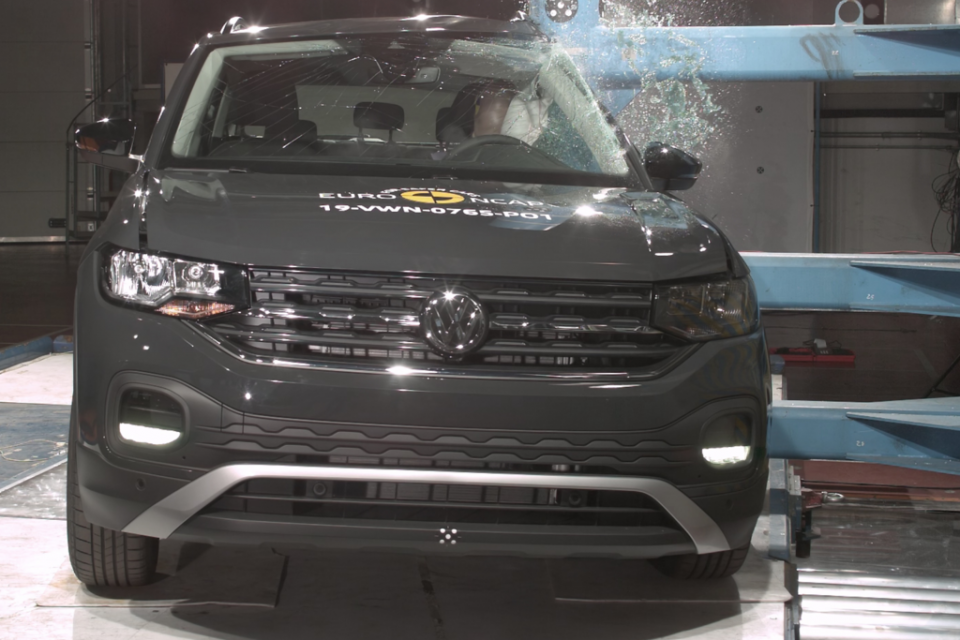
The VW scored 97 per cent for adult occupant protection, 85 per cent for child occupant protection, 81 per cent for vulnerable road user protection and 80 per cent for its safety assist systems.
Standard safety equipment includes:
And what’s great about the tech? None of it is incessantly interrupting the drive experience like some newer rivals.
VW backs its model range with a five-year, unlimited-kilometre warranty in Australia.

Servicing is due every 12 months or 15,000km, whichever occurs first. The smarter choice would be to opt for a prepaid service plan, or Care Plan as VW calls them. That way you can roll your maintenance costs into your finance repayments, and escape the dreaded bill shock.
If you decide to do that, the cost for a three-year/45,000km plan is $1500 (a saving of $199), and the five-year/75,000km plan is $2850 (saving you $571).
Beyond that, VW also offers the option of a guaranteed future value for the vehicle at the end of your loan term, which might be enticing for those concerned about resale values.
There is no doubt in this reviewer’s mind the new Volkswagen T-Cross stands head and shoulders above some of the larger cheap SUVs on the market from China.
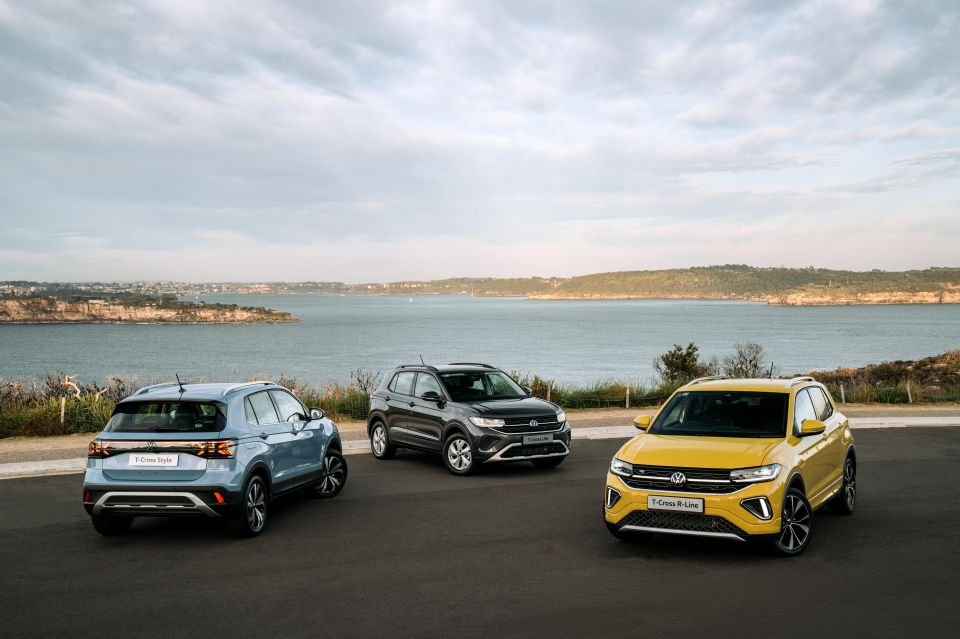
It mightn’t be as sharply priced as those, but you feel like you are getting more than your money’s worth – especially in the mid-level 85TSI Style, which stands out as the pick of the pack if you can justify the cost.
Click the images for the full gallery
MORE: Buy a Volkswagen T-Cross MORE: Everything Volkswagen T-Cross
Where expert car reviews meet expert car buying – CarExpert gives you trusted advice, personalised service and real savings on your next new car.
Matt has more than a decade of experience in automotive journalism, and loves exploring the pros and cons of new cars, delving into deep-dive industry stories, and going for a drive just for the fun of it.


Matt Campbell
6 Days Ago


James Wong
5 Days Ago


Max Davies
3 Days Ago


Josh Nevett
2 Days Ago


Josh Nevett
2 Days Ago


Paul Maric
20 Hours Ago